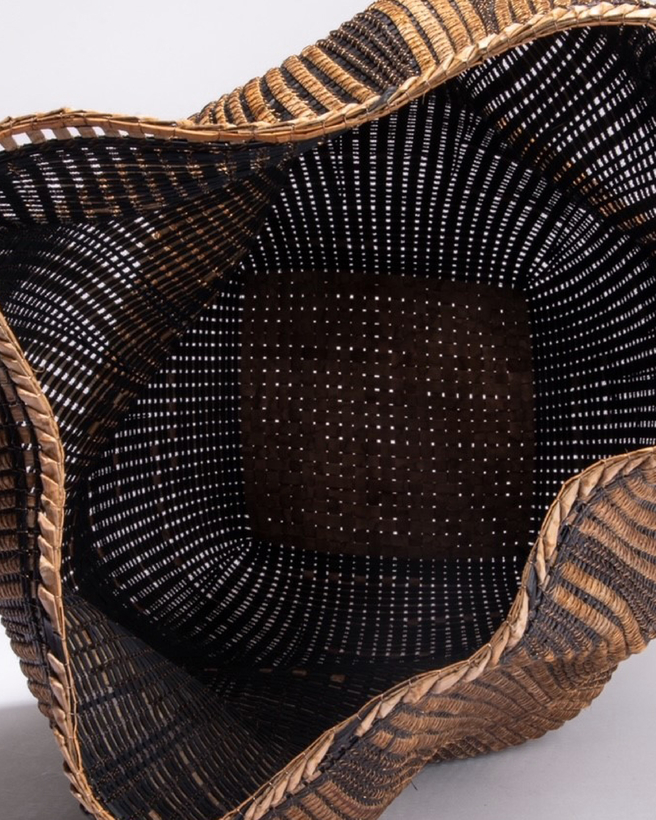For the past 45 years, Polly Adams Sutton has been making baskets at her home studio, in Seattle’s Beacon Hill neighborhood. She collects scraps of bark from western red cedars growing along the estuaries surrounding the Puget Sound, which are then soaked and dried, cut into thin strips, and split by hand into even thinner layers. Finally, they’re woven onto a base made of twill and wire.
Technically, one could use them for laundry, but given that some of Sutton’s baskets have been acquired by the Smithsonian American Art Museum, they probably belong on a well-lit shelf instead.

The artistry of such traditional crafts as basket weaving, ceramics, woodworking, and jewelry are explored in exquisite detail at the Palais de Tokyo, Paris, in a temporary exhibition (through June 9) that reveals 30 works from the finalists for the Loewe Foundation’s Craft Prize.

On the street, Loewe creative director Jonathan Anderson may be best known for the Puzzle Bag. But in art, architecture, and museum circles, the Craft Prize, which he launched in 2016, is his calling card.
Anderson first became intrigued by this discipline at age 21, when he “fell in love with a salad bowl” by the ceramist Lucie Rie that came up at an auction in London. In his world, Anderson says, “the potter is just as important as the architect.”
The Craft Prize finalists, who represent 16 countries and regions from around the world, were chosen from more than 3,900 submissions, and Sutton’s Ebb Tide is one of many delights to be seen in this exhibition. Ange Dakouo, from Mali, pays homage to both his father, a printer, and the West African practice of wearing protective amulets in his work, Harmony of Grigris, in which he bundled folded newspaper articles together with string to create a textile hanging before decorating them with shells. Hee Chan Kim, a Korean artist who now works out of Weehauken, New Jersey, and teaches at Parsons School of Design, in New York, used copper wire to stitch together thinly planed strips of ash wood to build a sculptural, lightweight vessel.

Kim’s piece was one of three works—which also include Miki Asai’s eggshell rings and Emmanuel Boos’s coffee table, titled Comme un Lego, made of movable bricks—to receive a special mention from the jury. This year, its 13 members included Wang Shu, the Pritzker Prize–winning architect, Abraham Thomas, a curator of modern architecture, design, and decorative arts at the Metropolitan Museum of Art, Sheila Loewe, the president of the Loewe Foundation, and the architect and industrial designer Patricia Urquiola. “It was a very intense deliberation this time,” says Anderson.

The winner of the prize, worth about $54,147, was Andrés Anza, a 33-year-old Mexican sculptor whose twisting, human-sized vessel, I Only Know What I Have Seen, was constructed from thousands of tiny, handmade clay spikes. The process was laborious and time-consuming, says Anza, “But I got it done by watching Netflix.” Which show? “All of them!”
Ashley Baker is a Deputy Editor at AIR MAIL and the co-host of the Morning Meeting podcast


